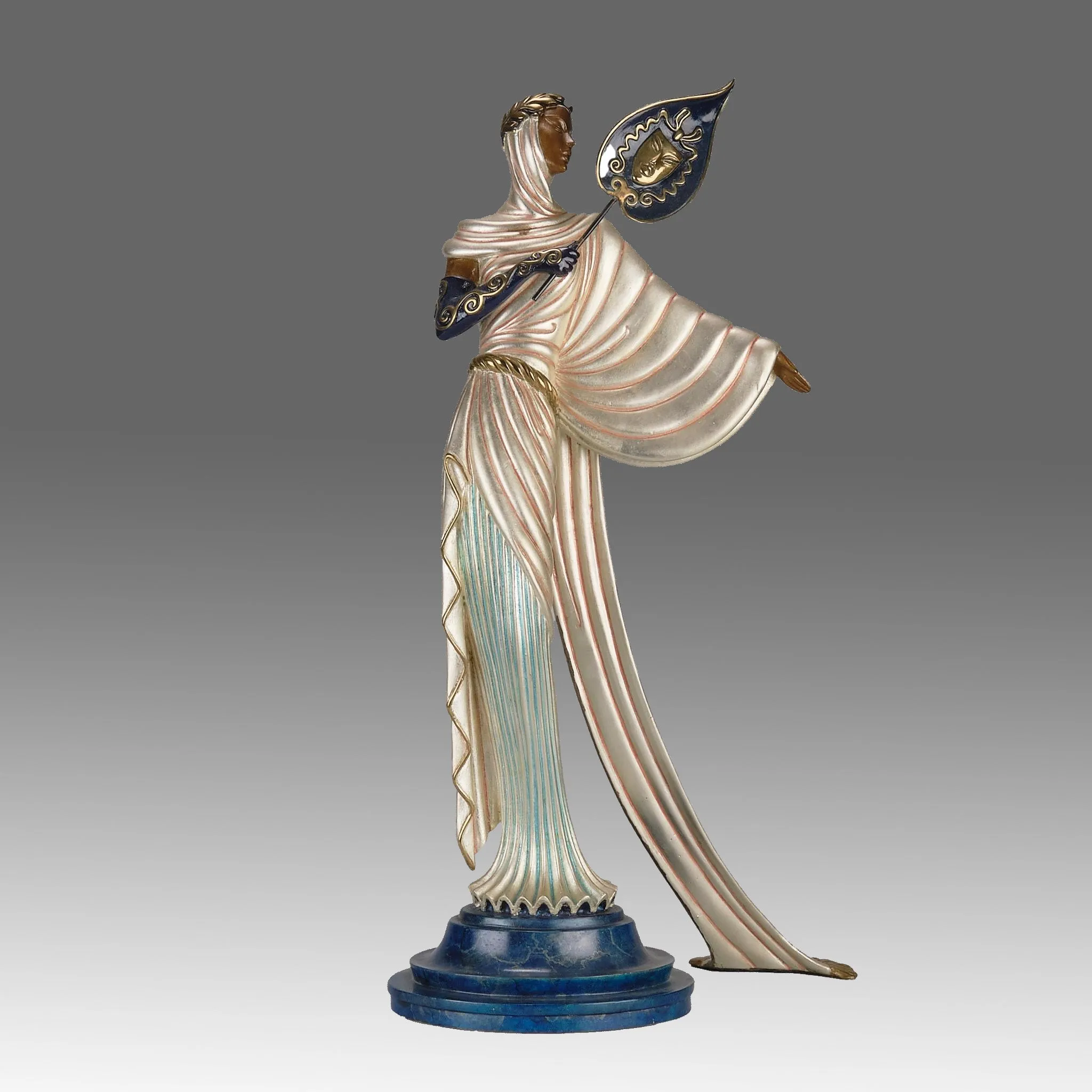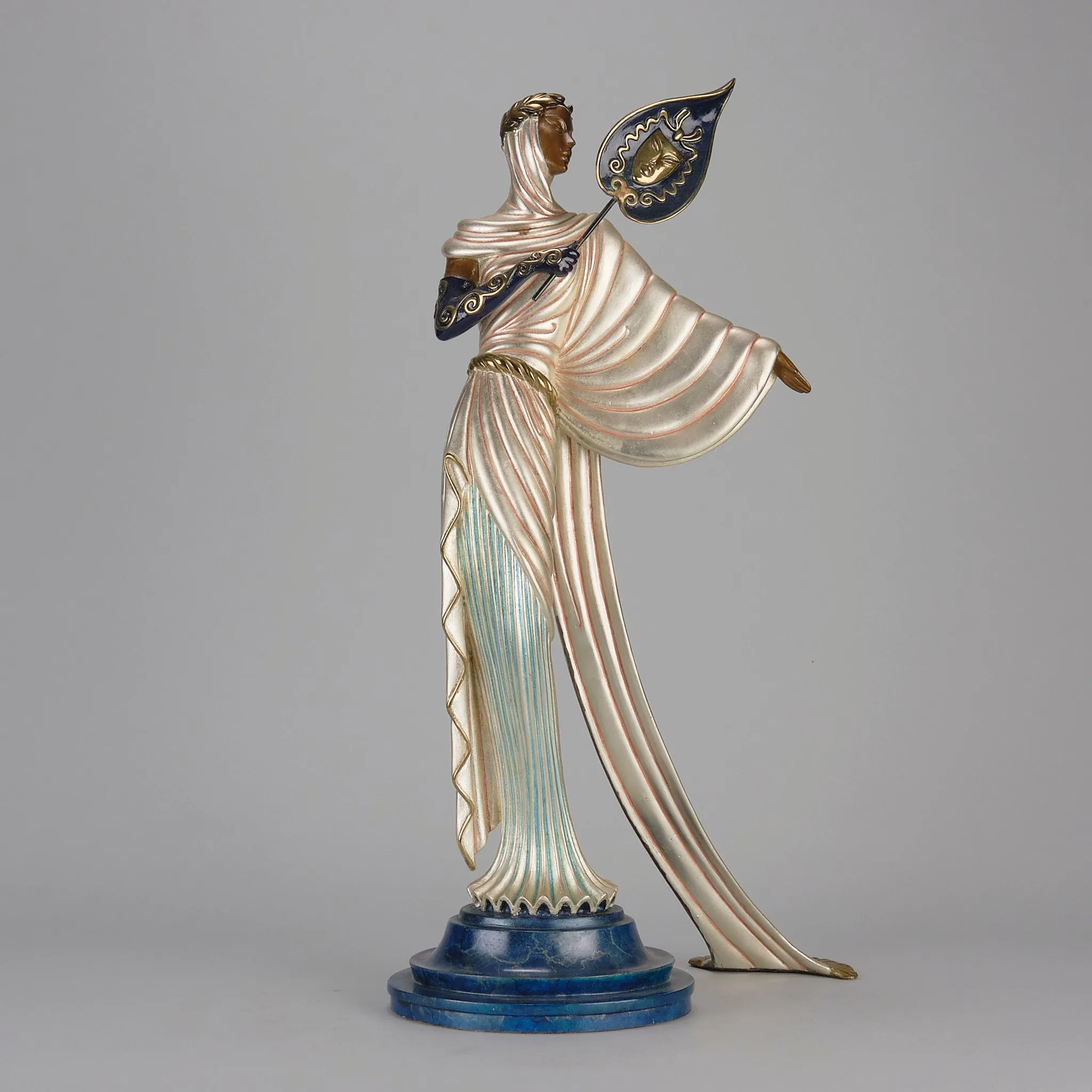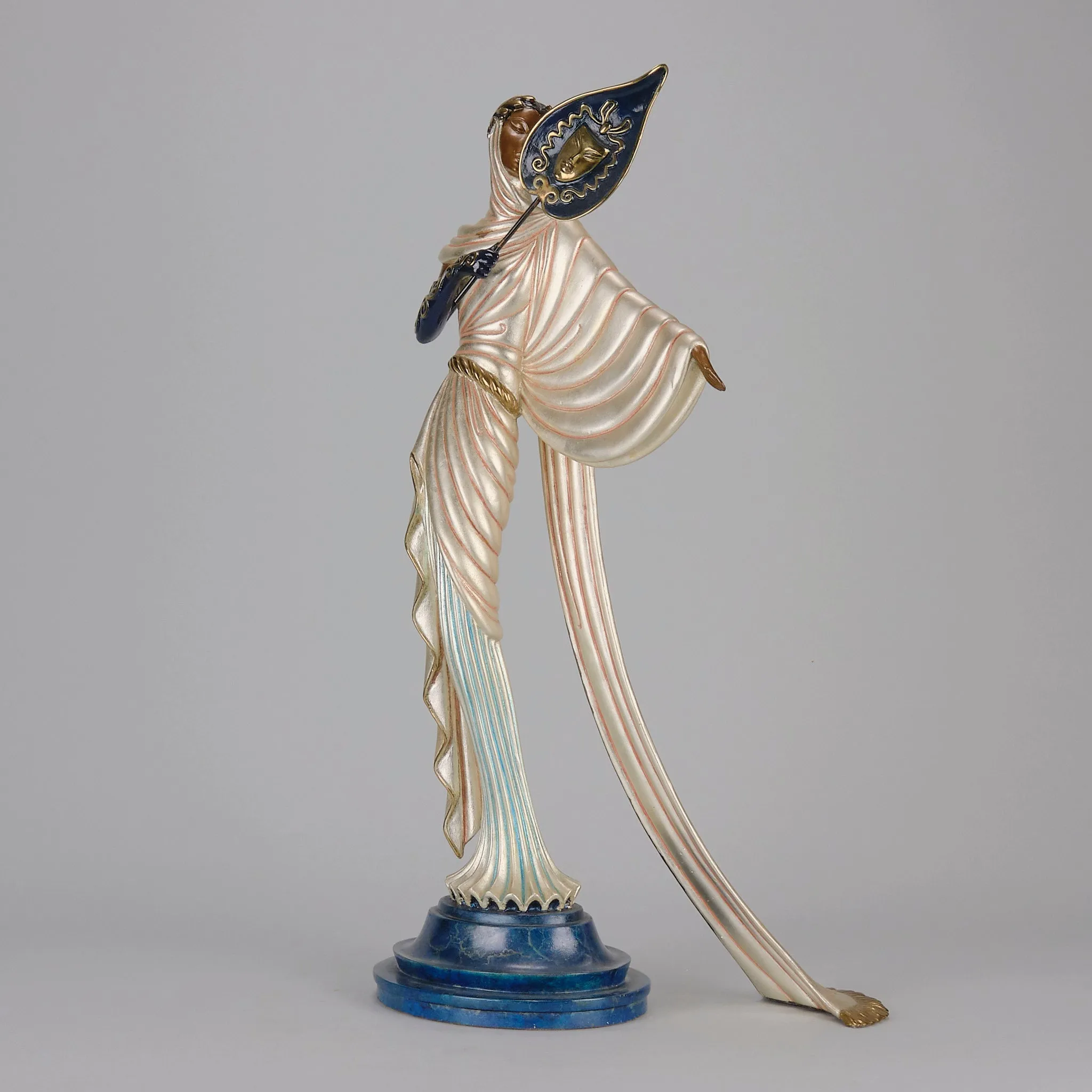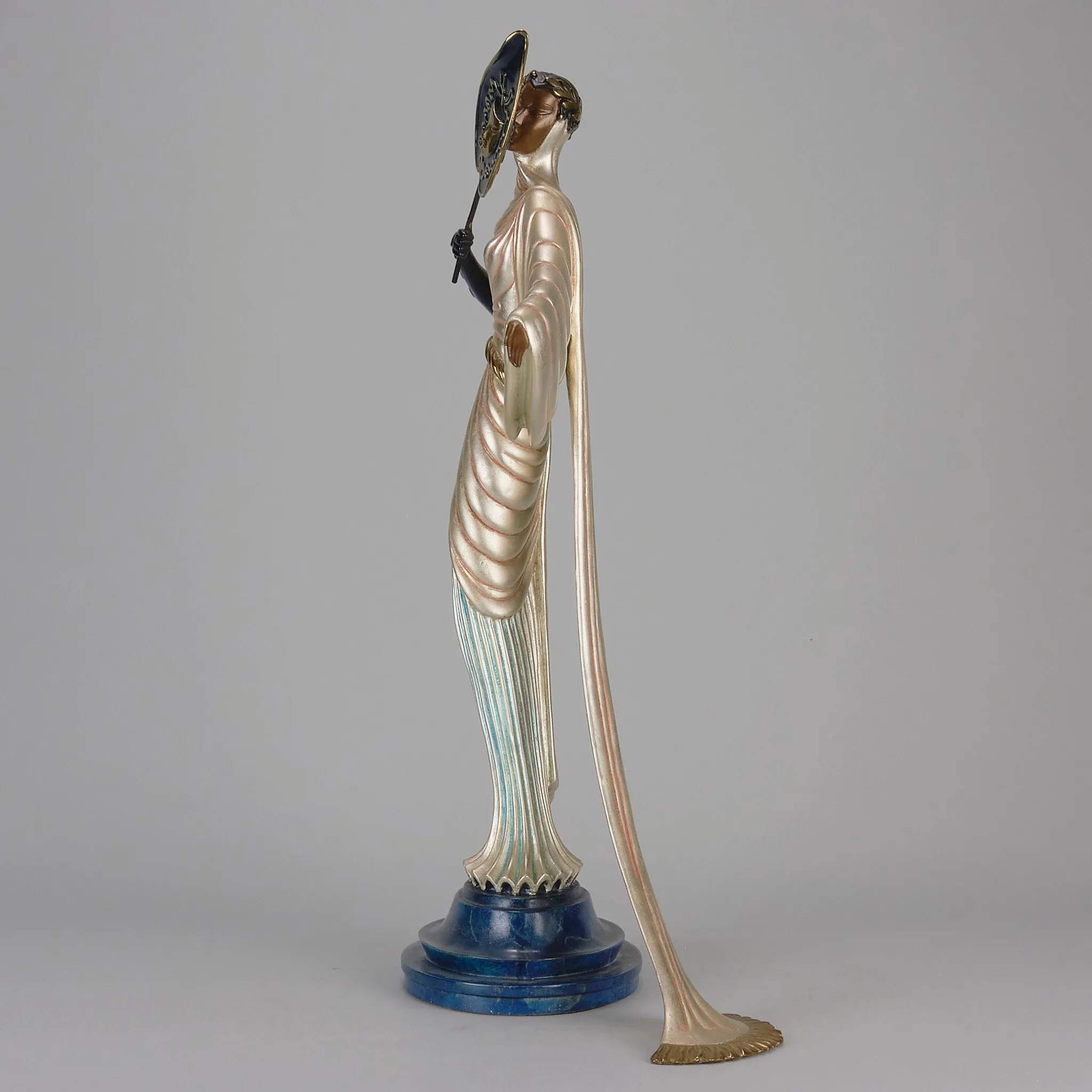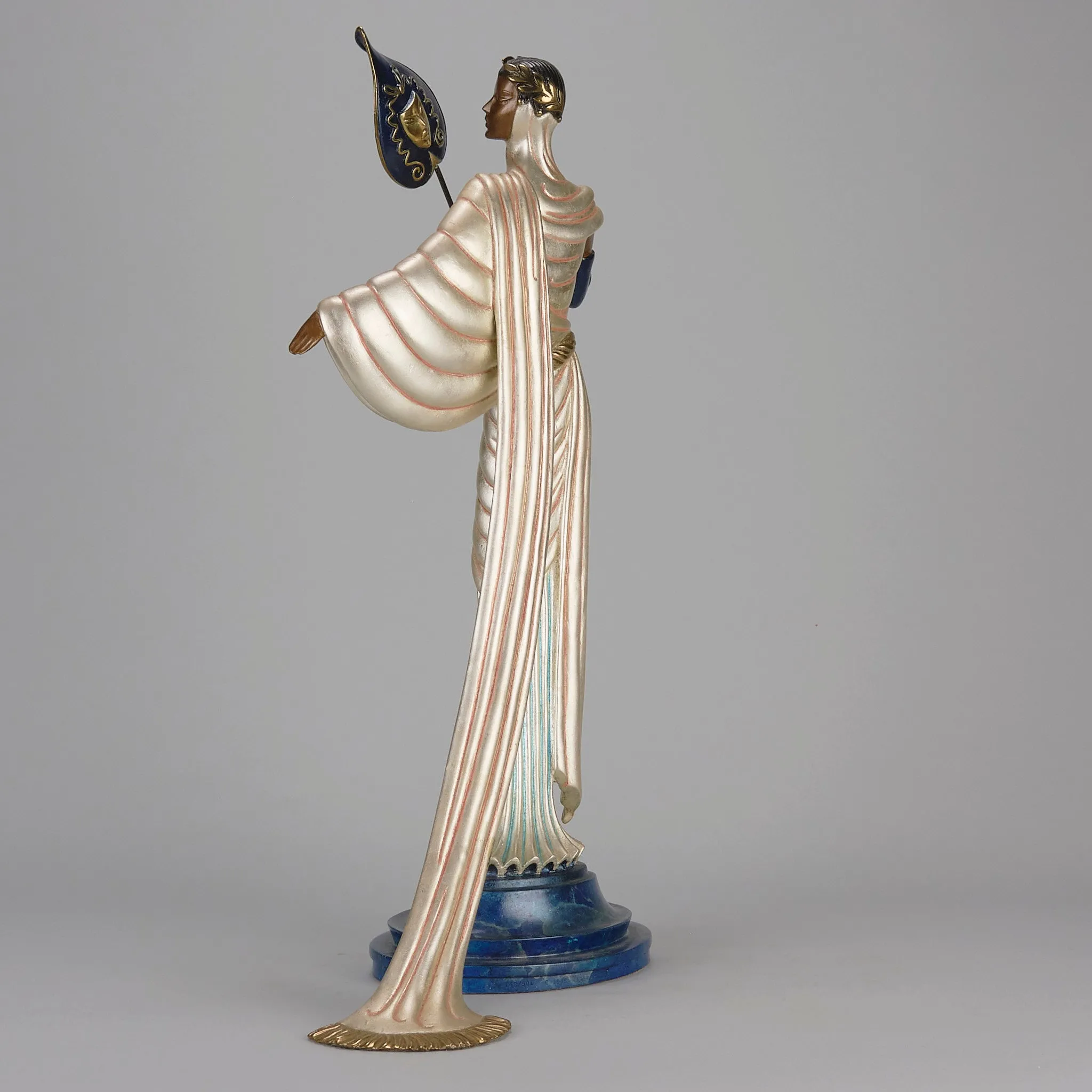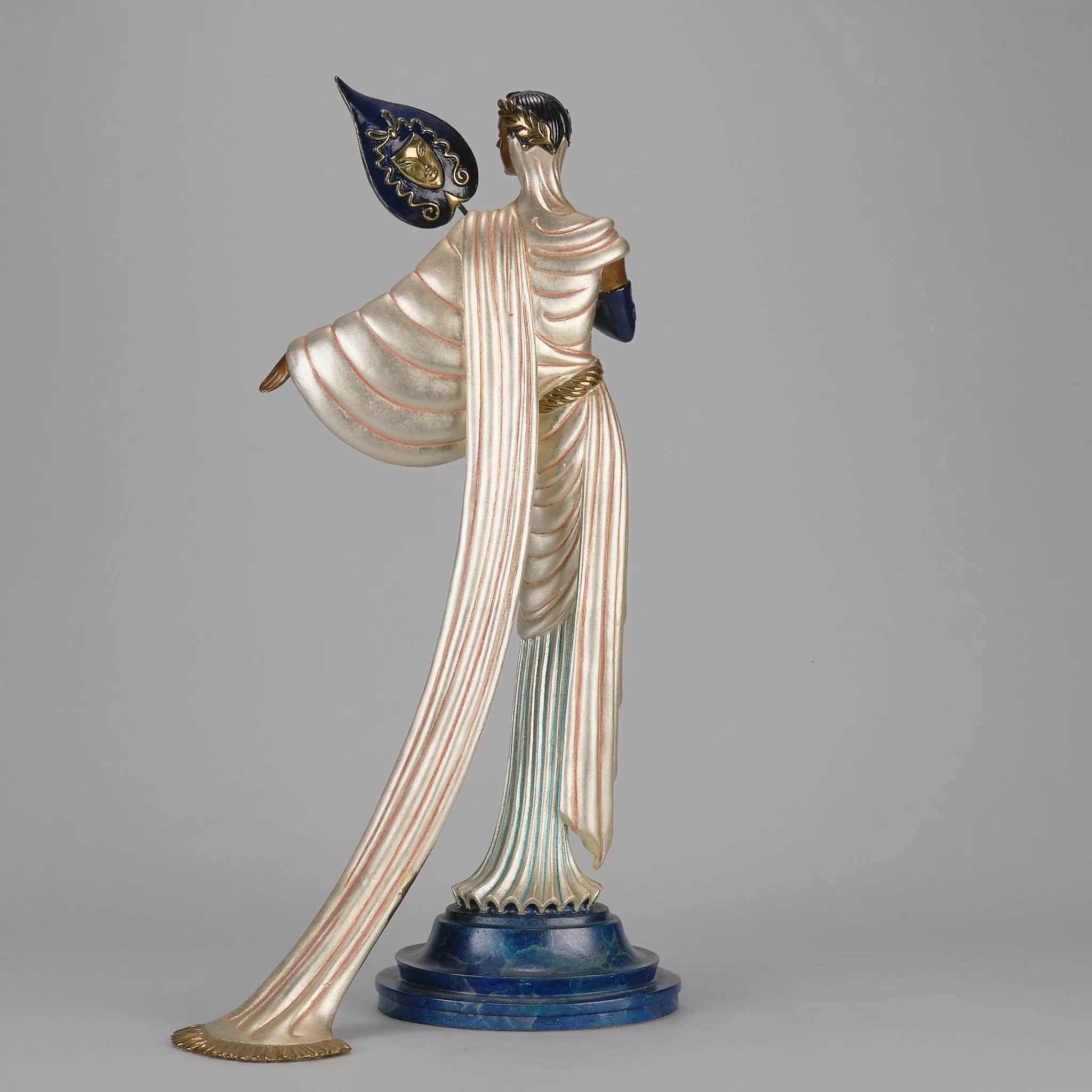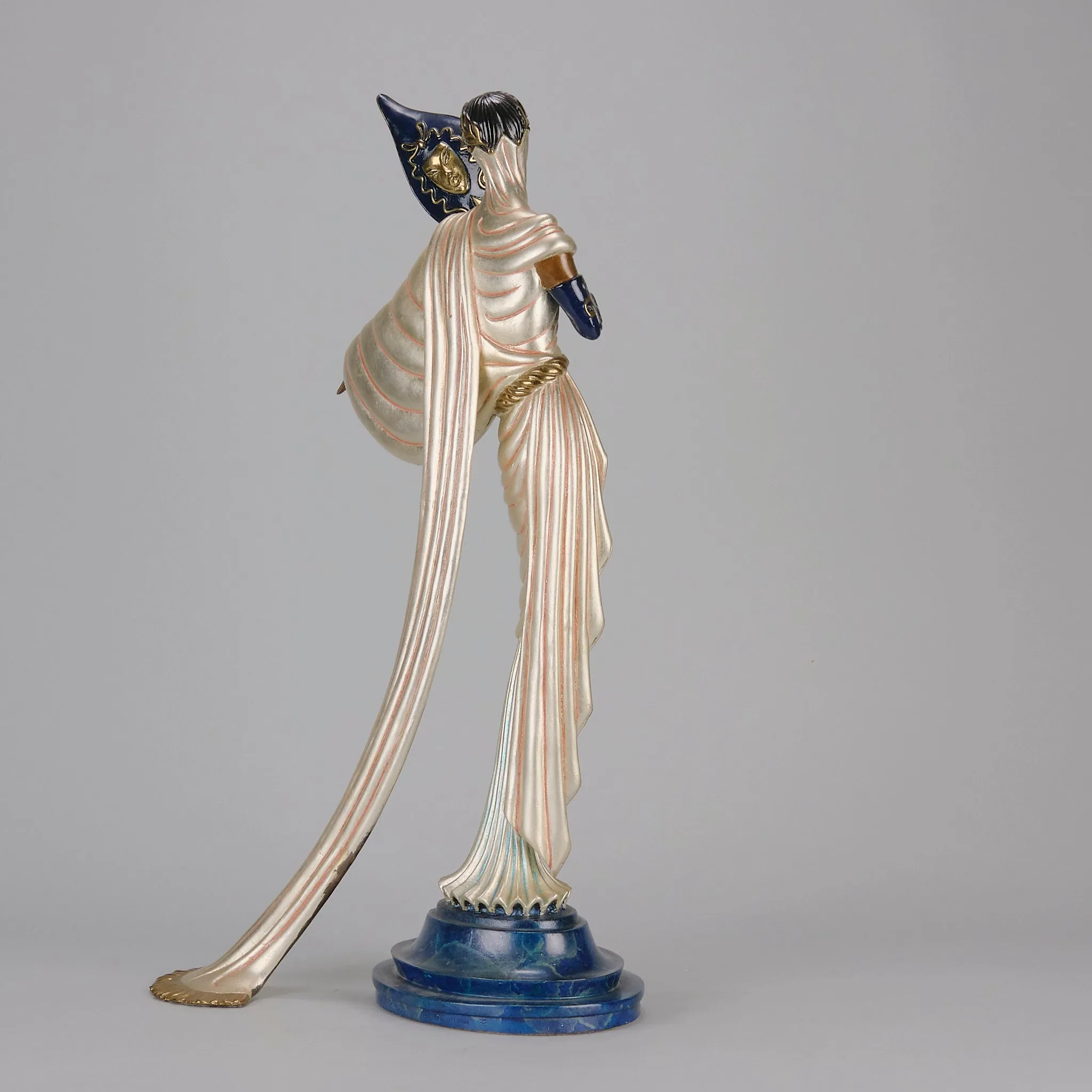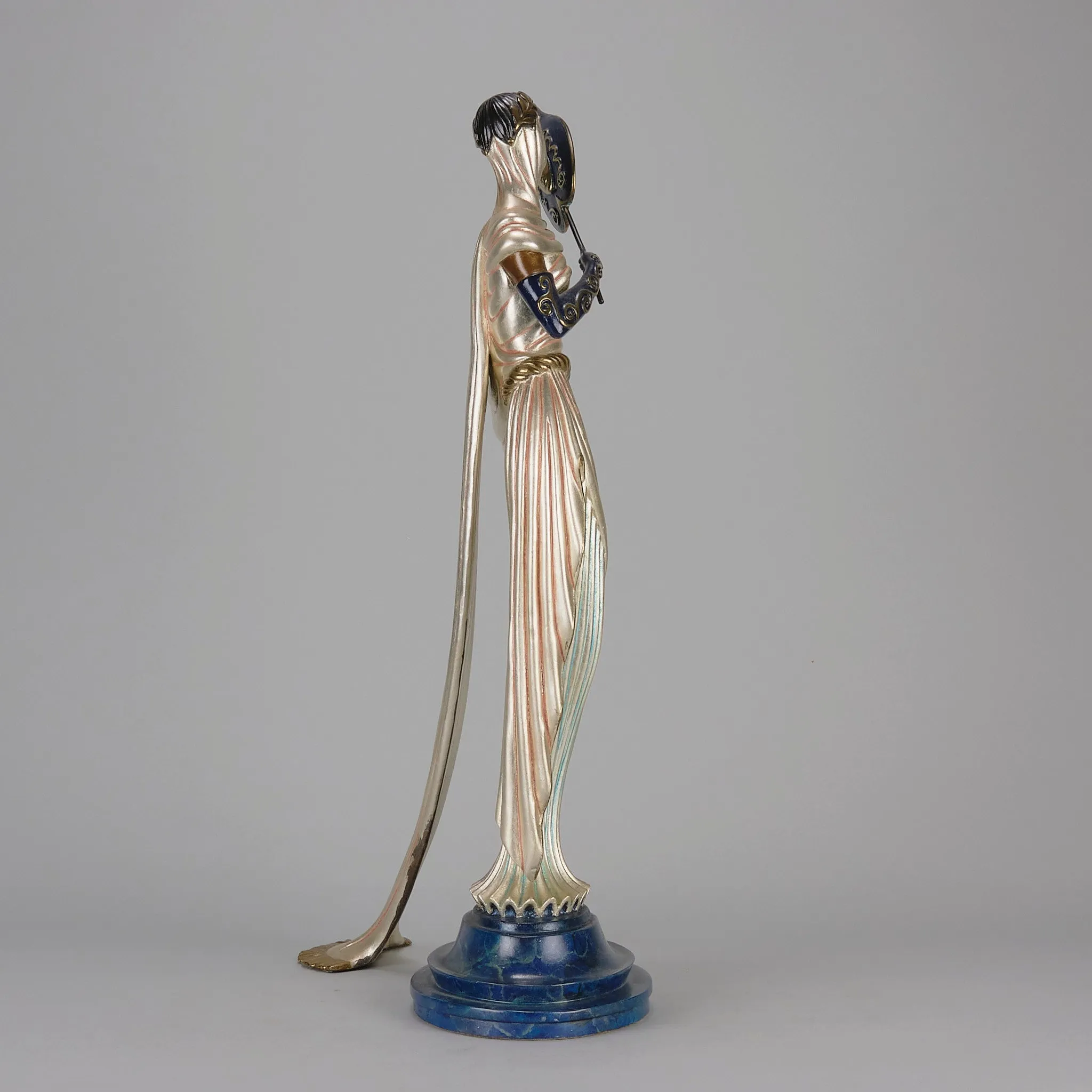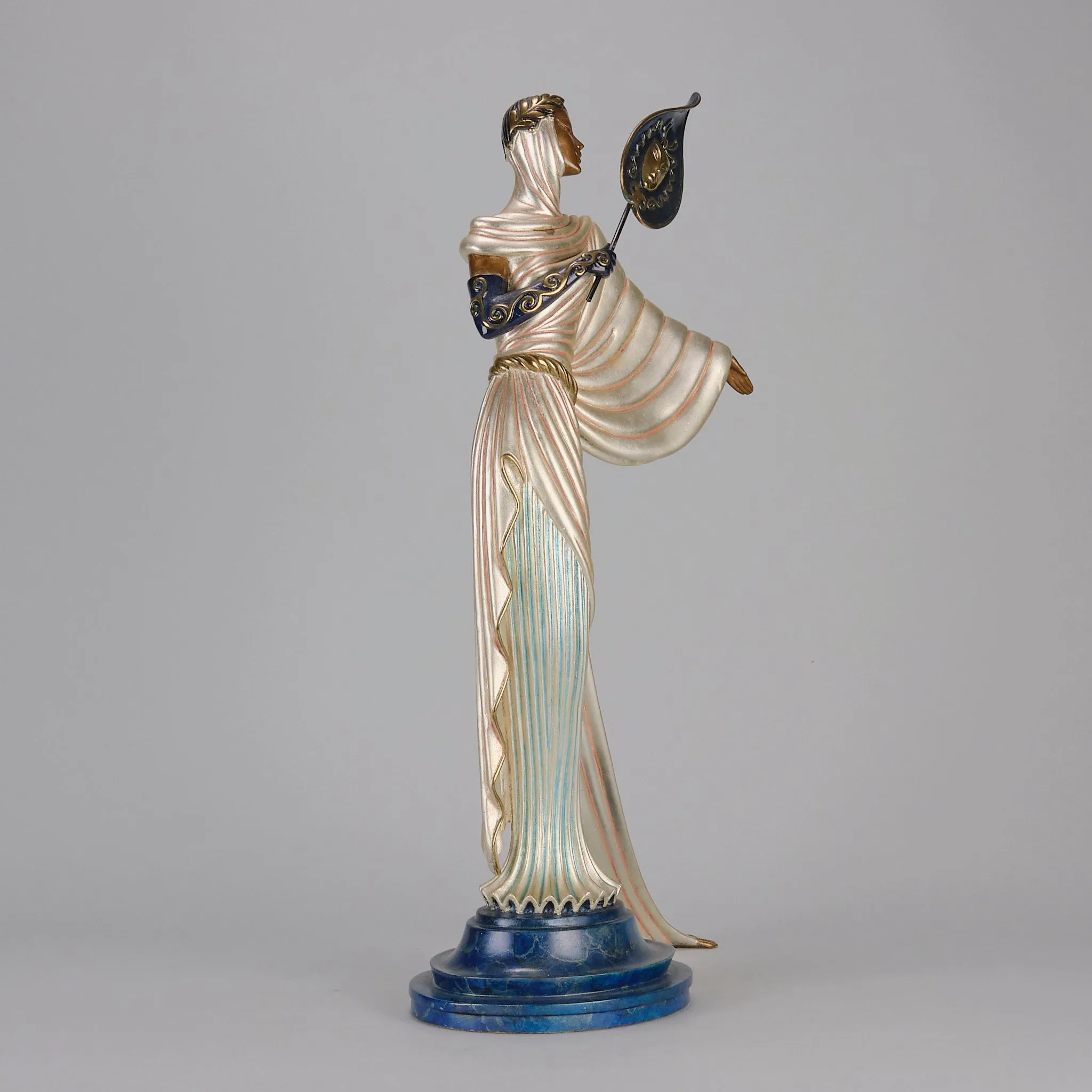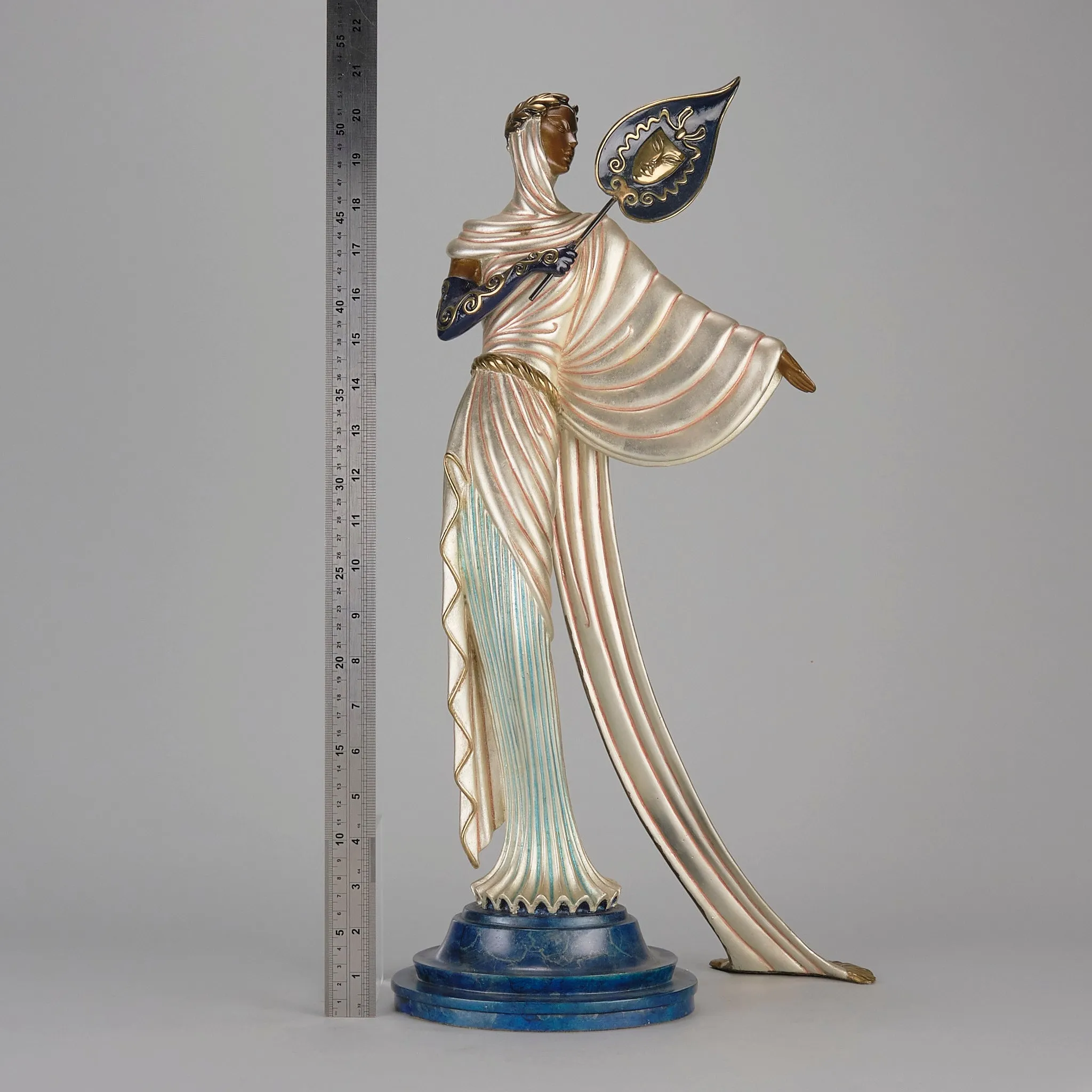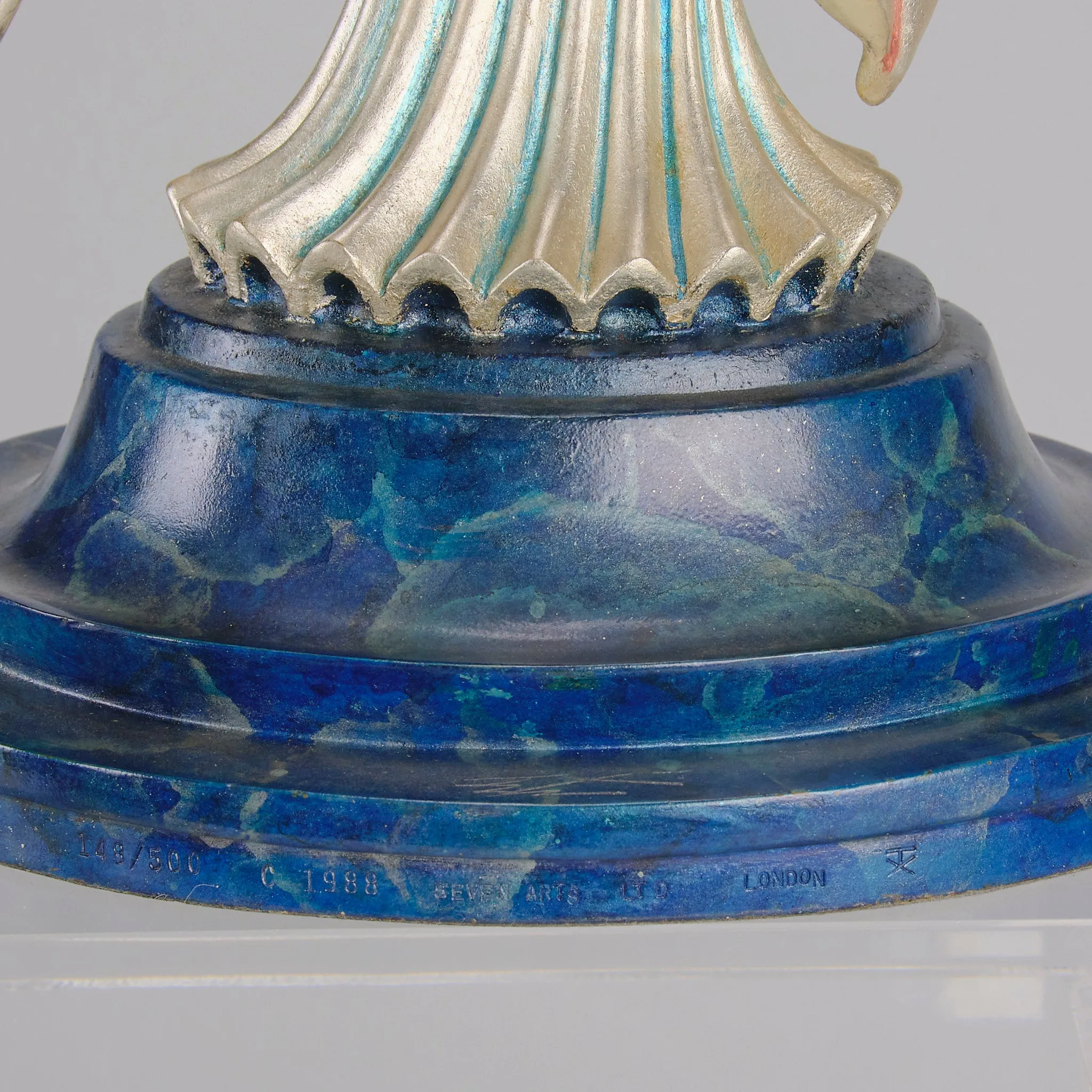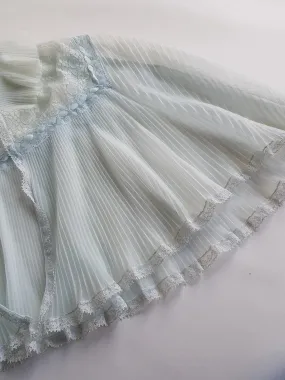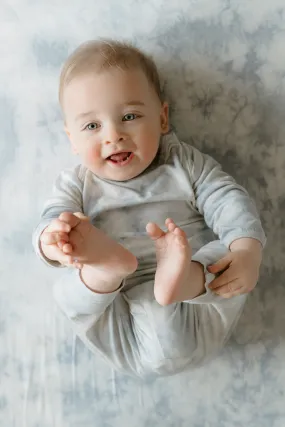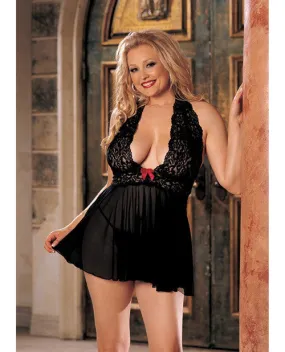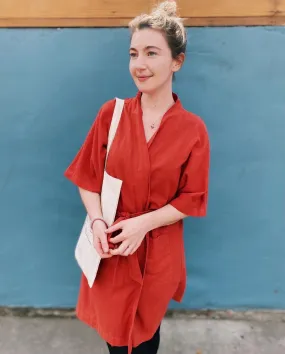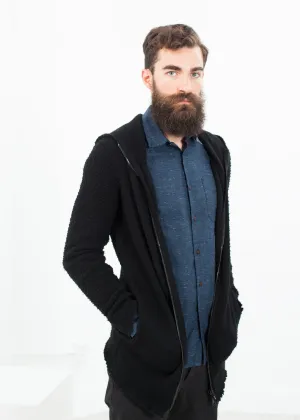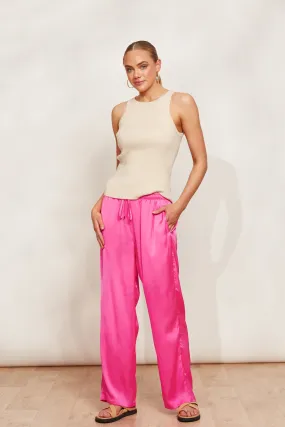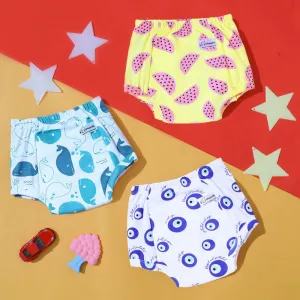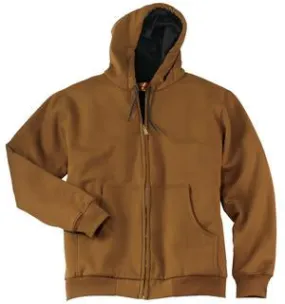A fabulous cold painted bronze study of an elegant beauty dressed in a full length gown and a beautiful head-dress holding a leaf shaped fan, the bronze with excellent colour and detail. Signed , numbered 148/500, dated 1988 and with foundry mark.
ADDITIONAL INFORMATION
Height: 53 cm
Circa: 1990
Foundry:
Materials: Bronze
Book Ref: Erté The Last Works by Eric Estorick
Page no. 129
SKU: 9101
ABOUT
Erté Tanagra Bronze
Erté Tanagra – Sculpture as such has been a rather late arrival in Erté’s life, but his three-dimensional creativity began long before he started to work with in Paris in 1913. It began at his house in St. Petersburg in 1897, when he was five years of age and created a little theatre using his mothers empty perfume bottles, which he filled with different coloured waters. These were his players, whose costumes he created by adorning them with bits of lace and gauze he found in the sewing room. Some months later, he began his career in fashion by designing a gown for his mother.
Erté: Process of producing a bronze
First, the artist models the sculpture in clay. A plaster mold of the model is made, from which a plaster cast is produced and the details are refined. After the plaster cast has been carefully checked to be sure that it is accurate, and final changes have been made, a flexible rubber mold is made from the plaster. This mold enables every detail to be captured. Molten wax is poured into the rubber mold, producing a faithful wax casting of the sculpture. This casting is then checked for detail and cleaned up, following which the wax cast is dipped into a bath of liquid ceramic to produce another mold. After several days, when the ceramic mold is dry, it is heated to melt the wax, which runs out through openings in the mold, leaving a cavity in its place (Hence the term lost wax). The mold is then fired in a kiln to bake the ceramic to a high degree of hardness. The final casting made by pour molten bronze into the cavity. When the bronze has cooled, the ceramic mould is carefully broken away, revealing the bronze sculpture within. Then the piece is sandblasted and chased to clean it up and removed imperfections. Finally, the sculpture is treated with chemicals and heat to achieve the desired patinas.
Erté’s words
” In fashion- creating forms for living people-in the design of furniture, in the design of theatrical settings and costumes, in the design of jewellery, one is functioning in three dimensions, and all this work in the round can be considered sculptural. In this sense, my theatrical settings are large environmental sculptures. I have never made a drawing for a dress or a costume without first having a fully developed idea of it in the round. In fact, before I start a design every detail has to be ripe in my mind, and I execute it without any deviation,because the conception has become a living reality deep in my creative psyche. When I design an evening dress, for example, I assemble a woman in full costume inside my head, swirling in her gown, showing every fold, seam and hem.”
Tanagra
"Tanagra" was a city in Ancient Greece famed for it's elegant statuettes in fired porcelain. 'Tanagra', was the first bronze sculpture to Erté's collection and is inspired by resplendent design elements from that era's costuming and architecture.
The slender, fluted undergarment of the figure is executed in a rich aquamarine patina and alludes to the elegant columns of Ancient Greece. Draped over the figure's head, shoulder and left arm is a magnificent head-dress and shawl finished in 23-carat- white gold leaf. The gentle fold of the garment resemble the drapery of classical marble sculpture from Greece's Golden Age. This figure is finished in exquisite detail: the laurel wreath, elbow length glove embossed with embroidery, and mysterious spade-shaped mask demonstrate again Erté's obsessive eye for perfection.
This bronze was modelled by Erté directly from an original costume that he had designed in 1940 for the stage show "Phi-Phi," a light-hearted romp through the times and tribulations of , the famous Greek sculptor responsible for the . The original costume was worn in the show by the celebrated French actress Madame Phigas.
Dyansen Gallery said: "We at Dyansen agree that this sculpture is one of Erté's finest to date, destined to become one of his most expensive and memorable creations; 'Tanagra's' line, gesture, and attitude recall Erté's most famous vintage bronzes. We strongly recommend to our collectors that they acquire this magnificent piece while it is available at the prepublication price. From its initial response, we sense that the availability of 'Tanagra' will last a very short time."
To view a selection of Erté's sculptures please click To read about the life and works of Erté, take a look at our .




